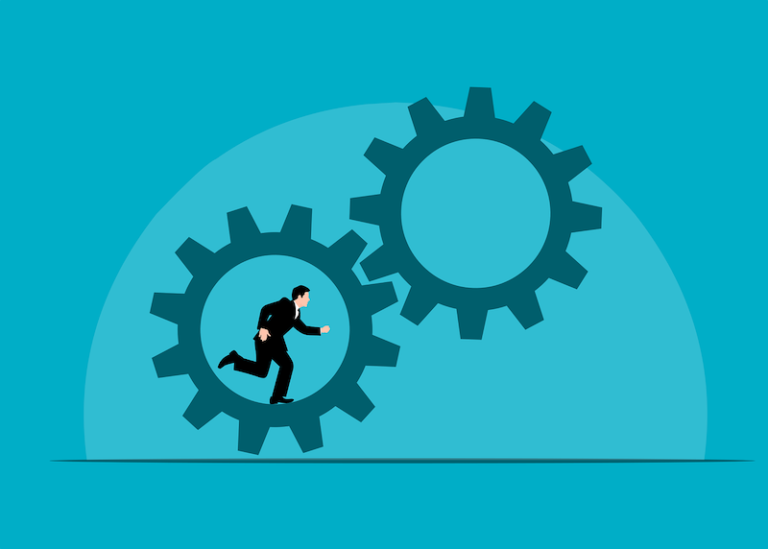Understanding Hypergrowth – Tips For Startups
Hypergrowth is essential for startups aiming for growth and expansion. Click here to learn about how to scale a business and strategies of fast growing startups
In this era of rapid technological change, companies seeking to maintain profitability must align their operations accordingly. However, there is a common misconception that digital transformation only entails integrating new technological systems. On the contrary, companies can also upgrade existing systems and applications to improve efficiency and keep up with technological changes. This article will give a step-by-step guide to modernizing your company's legacy application.

Legacy applications are generally software applications that are either obsolete or outdated. While legacy applications still work, their efficiency rate is often low and using them becomes increasingly challenging. For instance, it can become difficult to maintain and unable to interact with new systems.
Some characteristics of legacy applications include unexpected breakdowns, outdated design or architectural approaches and reduced functionality. They are also usually implemented on old technologies.
These challenges can be very costly for companies, especially in highly competitive industries. This is why many companies prioritize the modernization of their legacy systems to improve user experience and get ahead of the competition.
Legacy application modernization is the process of rebuilding or replacing outdated and highly inefficient legacy applications. It involves upgrading existing systems with modern solutions to ensure that such systems can transform business processes. Basically, the primary purpose of modernization is to get rid of old systems and integrate modern technologies to create more powerful systems.
As stated earlier, technological advancements are becoming more rapid than ever before. Thus, companies need to stay ahead of the wave and ensure that their systems are regularly updated to suit the current technological landscape. The benefits of legacy application modernization are numerous. First, it reduces the huge maintenance cost that legacy applications often require. According to a 2017 study, many businesses spend a significant proportion of their IT budget on maintaining legacy applications. Modernization can considerably reduce these costs and help companies direct their funds toward more beneficial projects.
There is also a strategic benefit to modernizing legacy applications. For instance, legacy applications can reduce your company's inefficiency. According to HR Dive, US companies lose about $1.8 trillion in productivity by using outdated software. Modernization could potentially enhance your productivity. This will make it easier for your company to satisfy customers and maintain a significant market share.
After assessing your legacy application, you would have identified the primary issues contributing to its inefficiency. However, it is also necessary to refine the problems. Identify the bottlenecks encountered by staff or users while utilizing the application. To do this, you can seek feedback from the users or your staff. This process will increase your understanding of the specific issues to tackle. It will also help you determine the suitable approach to modernizing the legacy applications.
You can take numerous approaches to modernize your legacy systems. These approaches include: rehosting, rearchitecting, refactoring, rebuilding, and replacing. Rebuilding involves redesigning the application from scratch while maintaining its core specifications. Rehosting is shifting the legacy application to another infrastructure or system with minimal modifications. Refactoring is more code-based. It involves making changes to the application's code to eliminate bugs and software issues. Lastly, replacement is a total overhaul.
It involves retiring the legacy application and replacing it with an entirely new product development process. Your modernization approach should depend on the issues posed by the legacy application. For example, a replacement can be a wise approach if the legacy application is completely inefficient with no solution prospects.
While modernizing your legacy application, you must consider future changes. The suitable modernization approach will likely be one that can easily adapt to changes. This flexibility is essential because technological changes will neither stop nor reduce. Thus, the modernized application needs to be able to align with future changes, or it risks becoming obsolete in no time.
You could execute your modernization with an in-house or external team. However, if you decide to outsource, ensure that you pick the right team. The primary qualities to look out for are responsiveness and technical competence. Thus, your external team needs to be competent enough to deliver the project on time and with the required specifications. They also need to be responsive enough to pay attention to your corrections.

After concluding the modernization process, the next step is to launch the modernized application. However, it does not stop there. You need to constantly observe the application's performance and functionality. This way, you can implement the necessary modifications to enhance the application's efficiency. Regular modernization should also be done to reduce the probability that the application will get outdated quickly.
The primary goal of most organizations is hinged on profitability and excellent user experience. However, achieving these goals depends on the availability of technologically-updated systems. Thus, companies must prioritize the modernization of legacy systems to deliver value to consumers and enhance profitability.
Hypergrowth is essential for startups aiming for growth and expansion. Click here to learn about how to scale a business and strategies of fast growing startups
PHP vs Java: Here, we explore performance and factors to help you make an informed choice for your web development projects. Click here to learn more
Discover some of 2024's best frontend frameworks for effective web development. These tools can help enhance your projects. Click here to learn more details.
REQUEST PROFILE